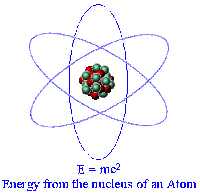
Regional Greenhouse Gas Initiative, Inc. (RGGI, Inc) is a nonprofit organization formed to provide technical and scientific advisory services to participating states in the development and implementation of the CO2 Budget Trading Program under the Regional Greenhouse Gas Initiative (RGGI). Information on the RGGI program is available at http://www.rggi.org/ .On December 20, 2007, RGGI, Inc. issued the following request for proposals (RFP): CO2 Emissions and Allowance Tracking System Implementation Services. The RFP is available at http://www.nescaum.org/ .
Interested proposers should read the document carefully.RGGI, Inc. anticipates entering into an agreement with the selected proposer on or about February 22, 2008. Responses to these RFPs must be received by RGGI, Inc. no later than 5 P.M. EST on January 22, 2008. Late proposals will not be considered. Faxed or e-mailed copies will not be accepted. Specific submittal instructions are described within the RFPs.
Interested proposers should note the following events and dates: Notice of Intent to Propose Form Due: January 3, 2008 Proposers' Conference Call: January 10, 2008Proposal Due Date and Time: January 22, 2008, 5PM EST Notification of Award: February 12, 2008 Contract Execution: February 22, 2008 Northeast States for Coordinated Air Use Management (NESCAUM) is facilitating communications with RGGI, Inc. for this RFP, and questions about the solicitation process, as well as the Notice of Intent to Propose Form, should be directed to the following: Charla Rudisill NESCAUM Phone: 617-259-2000 Fax: 617-742-9162 E-mail: rggi@nescaum.org
RGGI Program Overview: http://www.rggi.org/docs/program_summary_10_07.pdf
Public comments on the final allowance auction design study conducted for the New York State Energy Research and Development Authority (NYSERDA) and the RGGI Staff Working Group: http://www.rggi.org/auction.htm
Letter sent to U.S. Congress from Environmental and Energy Agency Heads in RGGI participating states outlining principles for the design of a U.S. federal greenhouse gas cap-and-trade program. A generic version of the letter is posted that was sent to individual members of Congress from RGGI state delegations, as well as Congressional leadership, and members of the Senate Committee on Environment and Public Works, House Committee on Energy and Commerce, and House Select Committee on Energy Independence & Global Warming: http://www.rggi.org/docs/rggi_letter_10_31_07.pdf
Interested proposers should read the document carefully.RGGI, Inc. anticipates entering into an agreement with the selected proposer on or about February 22, 2008. Responses to these RFPs must be received by RGGI, Inc. no later than 5 P.M. EST on January 22, 2008. Late proposals will not be considered. Faxed or e-mailed copies will not be accepted. Specific submittal instructions are described within the RFPs.
Interested proposers should note the following events and dates: Notice of Intent to Propose Form Due: January 3, 2008 Proposers' Conference Call: January 10, 2008Proposal Due Date and Time: January 22, 2008, 5PM EST Notification of Award: February 12, 2008 Contract Execution: February 22, 2008 Northeast States for Coordinated Air Use Management (NESCAUM) is facilitating communications with RGGI, Inc. for this RFP, and questions about the solicitation process, as well as the Notice of Intent to Propose Form, should be directed to the following: Charla Rudisill NESCAUM Phone: 617-259-2000 Fax: 617-742-9162 E-mail: rggi@nescaum.org
RGGI Program Overview: http://www.rggi.org/docs/program_summary_10_07.pdf
Public comments on the final allowance auction design study conducted for the New York State Energy Research and Development Authority (NYSERDA) and the RGGI Staff Working Group: http://www.rggi.org/auction.htm
Letter sent to U.S. Congress from Environmental and Energy Agency Heads in RGGI participating states outlining principles for the design of a U.S. federal greenhouse gas cap-and-trade program. A generic version of the letter is posted that was sent to individual members of Congress from RGGI state delegations, as well as Congressional leadership, and members of the Senate Committee on Environment and Public Works, House Committee on Energy and Commerce, and House Select Committee on Energy Independence & Global Warming: http://www.rggi.org/docs/rggi_letter_10_31_07.pdf














































